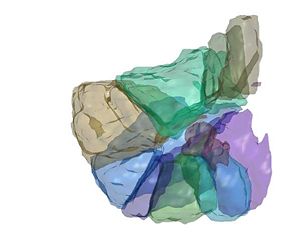Difference between revisions of "Cerebellum Protocol"
m (IACL:CEREBELLUM Protocol moved to Cerebellum Protocol: made public) |
m (note that delineation status is internal) |
||
| Line 17: | Line 17: | ||
{{h3|Delineation Status Pages}} | {{h3|Delineation Status Pages}} | ||
| + | These are for internal IACL use only. | ||
* [[IACL:CEREBELLUM_Tom|Tomacco Status]] | * [[IACL:CEREBELLUM_Tom|Tomacco Status]] | ||
* [[IACL:CEREBELLUM_Kwy|Kwyjibo Status]] | * [[IACL:CEREBELLUM_Kwy|Kwyjibo Status]] | ||
Revision as of 16:45, 19 March 2013
<meta name="title" content="Cerebellum Protocol"/>
| Cerebellum Protocol Project | |||
|---|---|---|---|
| Whole Cerebellum | Lobe Definitions | Vermis Definition | Lobule Delineation |
General Tips
A Little Bit about the Cerebellum
The cerebellum plays a very important role in the integration of sensory perception, coordination and motor control. The Cerebellum influences movement in the motor cortex and receives feed back on body position through the spinocerebellar tract. This allows a delicate control of body position and fine motor control.
Cerebellar ataxia is characterized by incoordination of gait, speech, and/or eye-movements and may result from a variety of causes, including genetic disease, toxic/metabolic/infectious agents, stroke, tumors, and unidentified factors. Although cerebellar ataxia has a significant impact on the lives of patients and their families, treatment options are limited.
http://www.hopkinsneuro.org/ataxia/
Delineation Status Pages
These are for internal IACL use only.


